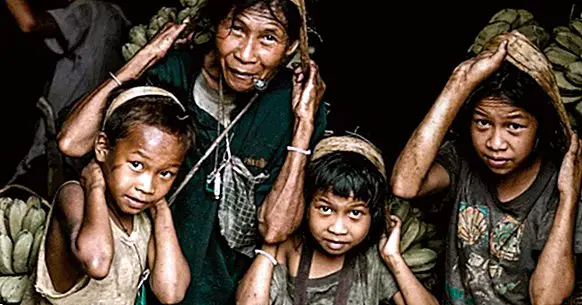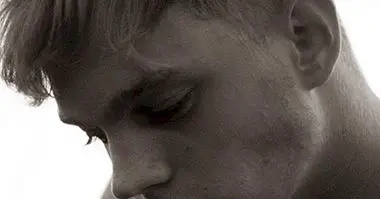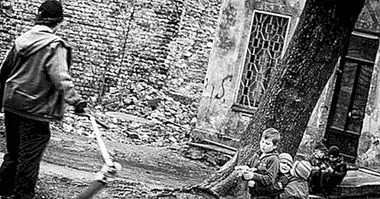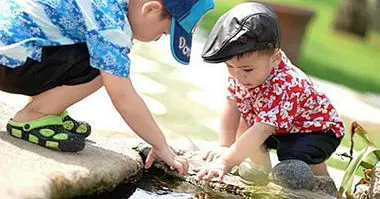Evolutionary psychology: what it is, and main authors and theories
It is evident that we are not the same at the moment of birth, at five years old, at fifteen to thirty or at eighty. And is that since we are conceived until we die we are in a continuous process of change: throughout our lives, we will evolve and develop as individuals, and we will gradually acquire different abilities and abilities according to our body go maturing both biologically and from experience and learning.
It is a development process that does not end until the moment of death, and that has been studied by different disciplines. One of them is evolutionary psychology , which we are going to talk about in this article.
- Related article: "The 12 branches (or fields) of Psychology"
Evolutionary psychology: basic definition
Evolutionary psychology is considered the branch of psychology that has as its object of study the development of the human being throughout its life cycle . It is a discipline born of the interest of understanding the multiple changes that manifest the mind and behavior of a developing being continued from birth to the grave.
Although studies of evolutionary psychology have traditionally focused mainly on child development, it is very important to emphasize the fact that this discipline covers the entire life cycle: adolescence, maturity and old age are also the object of highly researched and relevant study. despite having received a lower level of attention (being perhaps the adult stage the least researched of all in this regard).
This discipline emphasizes the processes of change for which the subject is passing through his life, taking into account the presence of distinctive and individual elements that make us unique but of similarities with regard to the development process in question . Also keep in mind that In this development we will find both biological and environmental factors . The sociocultural environment, the degree of biological maturation and the interaction of the organism with the world are valued.
Physical, socio-affective, communicative and cognitive development are some of the main elements that from this branch of psychology are analyzed and of which values evolution, having some models or paradigms different theories and focusing more or less on concrete aspects. Evolutionary psychology allows us to assess the point of view and knowledge of each subject based on how the world perceives someone with a determined level of development. The usefulness of this is broad, given that thanks to the understanding of these factors we can adjust education, jobs or services offered to different sectors of the population taking into account their needs.
The beginnings of this branch of psychology
Although one of its most representative authors is Jean Piaget, this discipline has multiple precursors to take into account. The first scientific records of development milestones date back to the 17th century, with the appearance of the first diaries or biographies of babies in which sensory, motor, cognitive and language behavior was observed (Tiedemann). Darwin would also make observations regarding the evolving behavior of the children, making his own baby biography and recording the progress of his son.
The first properly scientific study on child development is that of Preyer, who came to develop standards of scientific observation to record the behavior of children and animals and published in 1882 "The soul of the child."
The institutional establishment of education as something obligatory in childhood led to a deep study of the psyche and the development processes. In this stage, Binet would develop the first intelligence test dedicated to the child population. Likewise, emerged authors like Montessori that would contribute to developing alternative education systems beyond the employee so far .. Stanley Hall is also an essential precursor figure, due to him the introduction in the evolutionary psychology the study of the adolescent subject.
Likewise, currents such as psychoanalysis would be born that would begin to give importance to children's experiences and development as an explanation of adult behavior. Freud himself would elaborate a series of phases of psychosexual development that would contemplate different changes linked to his theory, as well as highlight in the field of child development Anna Freud and Melanie Klein as main exponents of this current.
Some of the theories and models proposed from this current
Evolutionary psychology has generated, throughout its history, a large number of theories and models.Winnicott, Spitz, Wallon, Anna Freud, Mahler, Watson, Bandura, Case, Fischer, Newgarten ... they are all names of authors and relevant authors in the evolution of this discipline. Some of the best known and classic, however, are those listed below.
The contribution of Freud
Although the Freudian conception of child development is not particularly popular today and is not usually among the most accepted explanatory models, it is true that Freud's contribution is one of the oldest and most well-known models within the psychology of children. that you have proof. Freud considered that the personality was structured by three instances, the id or drive part, the superego or critical, censorial and moral part and the I or element that integrates the information of both and shapes the rational and conscious way of acting based on the principle of reality. The baby would not have Yo during birth , being pure it, and forming the first according to the subject is evolving and differentiating itself from the environment.
Among many other contributions, we also highlight the follow-up of a development sequence in the form of phases, in which it is possible to suffer regressions or blockages that prevent the subject from advancing properly in their development and generate fixations. We are talking about some phases that Freud links to sexual development, denominating stages of psychosexual development and receiving a name based on the main focus of search for gratification and conflict resolution at the poles of satisfaction-frustration, authority-rebellion and oedipal conflict.
The phases in question are the oral (first year of life), anal (between the year and three years), phallic (from three years to six), latency (in which sexuality is repressed), and ranges from six until puberty) and genital (from adolescence).
- Related article: "The 5 stages of psychosexual development of Sigmund Freud"
Melanie Klein and child development
Another psychodynamic author of great importance in the study of child development was Melanie Klein, who considered that the human being is motivated to establish relationships with others .
This author, who would develop the study of the child from the symbolic game and the theory of object relations, considered that the I existed from birth and that the human being went through two fundamental stages in the first year of life: schizoid position- paranoid (in which the subject does not differentiate people as a whole but rather splits between good and bad parts as if they were differentiated elements) and depressive position (in which there is recognition of objects and people as a whole, appearing blame when understanding that that before considered a good object and another bad part of the same object).
- Maybe you're interested: "The psychoanalytic theory of Melanie Klein"
The stages and crisis of Eriksson
Perhaps one of the most far-reaching psychoanalytic contributions, in the sense that it covers not only childhood but the whole life cycle, is that of Eriksson. This author, a disciple of Anna Freud, considered that society and culture had a much more relevant role in shaping the personality throughout life. He identified a series of stages based on the existence of crises (since the human being has to face the search for satisfaction of their own needs and environmental demands) during psychosocial development.
During the first year of life the baby has to face the crisis of the basic Confidence vs the Distrust, learning or not to trust in others and in the world. The second phase is that of Autonomy vs. Shame, between the first and third year of life, in which the child must seek seek independence and autonomy in basic skills .
Then the subject must face the crisis of Initiative vs Guilt, seeking the balance between having their own initiative and accepting the responsibility not to impose on others. The fourth stage (6-12 years) is Laboriousness vs. Inferiority, in which social skills are learned. Then, between twelve and twenty years the subject would arrive at the crisis of Identity vs Confusion of roles (in which one's own identity is sought).
From there to the age of forty, the crisis of Intimacy vs. Isolation would emerge as the stage in which we seek to generate strong bonds of love and commitment with friends and couples. The seventh crisis or stage occurs between forty and sixty-five years, being the Generativity vs. Stagnation in which it seeks to be productive in order to provide welfare for future generations. Finally, during old age one would reach the Integrity vs. Despair phase, as a time when you look back and value life as something significant or disappointing .
- Related article: "Erikson's Theory of Psychosocial Development"
Piaget cognitive-evolutionary theory
Perhaps the most well-known and accepted model of evolutionary psychology is that of Jean Piaget, which some authors consider the authentic father of the discipline. The theory of this author tries to give explanation on how the cognition of the human being evolves and adapts throughout the development.
The developing subject is generating different structures and mental schemes that allow him to explain the world from his own performance on the (being the action and interaction of the subject with the necessary means for there to be development). The minor acts on the basis of two main functions: organization (understood as the tendency to develop progressively more complex mental structures) and adaptation (which in turn can arise as assimilation of new information as something added to what is already known or accommodation of the pre-existing schemes to this if it is necessary to change them to adapt to the new information).
This theory assumes that, over the course of development, more and more complex thinking systems and capacities are emerging, passed on subject by various stages or periods of development . For this author the biological / organic reigns over the social, depending on and following the development learning.
The author identifies the sensorimotor period (in which the merely reflex schemes of the interaction, lasts approximately until two years of age), the preoperative period (in which he begins to learn to use symbols and abstractions between two and six years), the of specific operations (between seven and eleven years, in which the ability to do different mental operations and solve logical problems) and formal operations (in which, starting at about twelve or fifteen years ago, a hypothetico-deductive thought and a capacity for complete abstraction, typical of adults).
- Related article: "Jean Piaget's Theory of Learning"
Sociocultural model of Vygotsky
Another of the great authors of evolutionary psychology, Vygotsky considered that it was learning that made us develop. Cognitive growth is learned from the interaction, and not the other way around. The most relevant concept of this author is that of the zone of proximal development, which marks the difference between what the subject is capable of doing for himself and what he can achieve with the existence of external help, in such a way that Through the granting of aid we can contribute to develop and optimize the skills of the subject .
The culture and society mark to a great extent the development of the child, through processes of internalization of external information obtained through action. The child first learns interpersonally to subsequently perform an intrapersonal learning.
Eco-model of Bronfenbrenner
This author's model describes and analyzes the importance of different ecological systems in which the minor moves in order to evaluate their development and performance.
Microsystem (each of the systems and environments in which the child directly participates, such as family and school), mesosystem (relations between the components of the microsystems), exosystem (the set of elements that influence the child without the latter directly participating in they) and macrosystem (the cultural context) are next to the chronosystem (events and changes that may happen over time) are the aspects that this author most value at a structural level.
Bibliographic references:
- Sanz, L.J. (2012). Evolutionary and educational psychology. CEDE Preparation Manual PIR, 10. CEDE: Madrid.



















